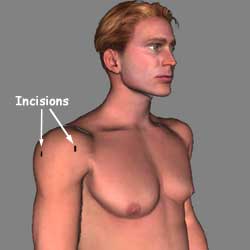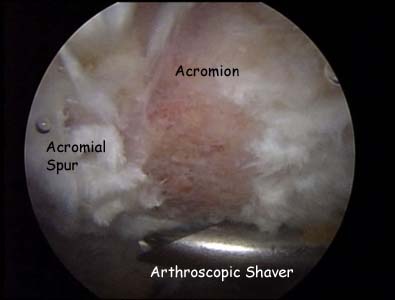Indications for operation
Subacromial Impingement (painful arc) unresponsive to treatment
Rotator cuff rupture (repaired at same time)
ACJ arthritis (treated at same time)
Subacromial Impingement (painful arc) unresponsive to treatment
Rotator cuff rupture (repaired at same time)
ACJ arthritis (treated at same time)
All surgical procedures have some element of risk attached.
The risks outlined below are the most common or most significant that have been reported.
In the majority of cases all the pain is removed by surgery however occasionally a small amount of pain persists. This is usually mild but very rarely (less than 1%) can be the same or worse than prior to surgery.
If an infection does occur it is usually superficial in the wounds and is easily treated with antibiotics.
Rarely the infection can be deep inside the joint and this requires surgery to wash the joint out.
The axillary nerve runs close to the bottom of the joint and, if damaged causes weakness of the deltoid muscle and difficulty in raising the arm.
The shoulder will often become stiff after surgery and this usually settles with physiotherapy. Rarely the shoulder can become very stiff and require manipulation or arthroscopic release surgery.
General Anaesthetic with an interscalene block (Fully asleep with a local anaesthetic injection into the side of the neck will numb the nerves to the shoulder for post-operative pain relief)
Arthroscopic

3 ½ cm incisions will be made in the shoulder, one to the back, one at the side and one at the front of the shoulder.
The gleno-humeral (shoulder) joint will be inspected first followed by the subacromial bursa and the rotator cuff. A soft tissue shaving device will be used to clear any scar tissue away. A bone-shaving device will be used to shape the underside of the acromion (the bone at the top of the shoulder) and remove any excess bone.


Small butterfly paper stitches will be used to close the wounds.
Elastoplast dressings will be placed over the top of the paper stitches and an adhesive bandage over the top of this.
A sling will be placed on the arm and it may feel numb for the rest of the day. You can go home when you feel comfortable and will be given instructions on what to do next.